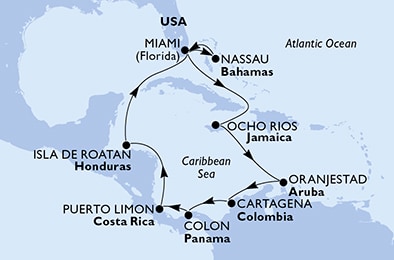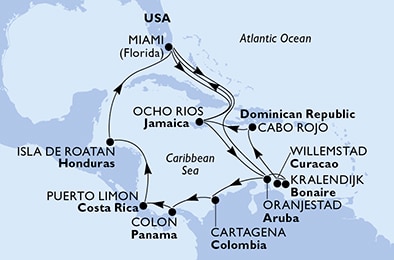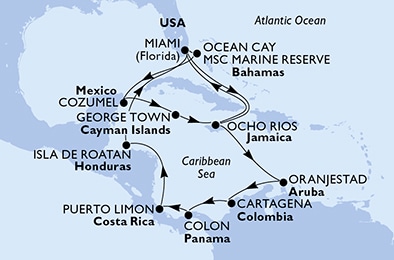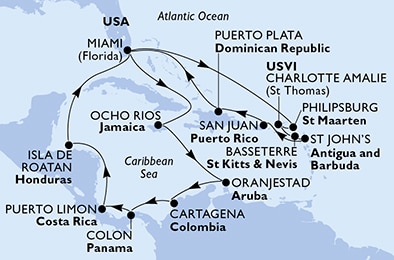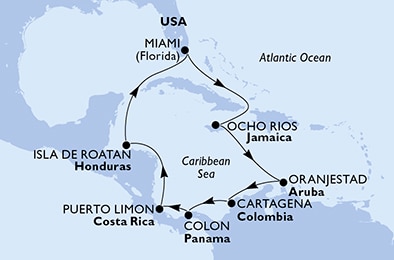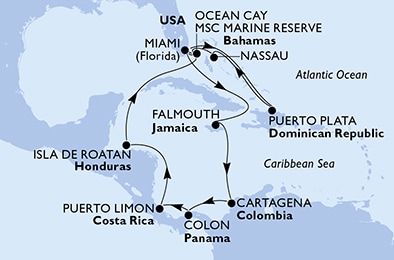
Port Cartagena
Cartagena, located on Colombia's Caribbean coast, is a city that beautifully blends history, culture, and tropical charm. The heart of the city is its walled old town, a UNESCO World Heritage Site, where cobblestone streets wind through vibrant colonial-era buildings, flower-filled balconies, and picturesque plazas. Landmarks such as the Clock Tower, San Felipe de Barajas Castle, and Cartagena Cathedral highlight the city’s rich history, dating back to the Spanish colonial period. Visitors can also explore the city’s historical role as a key port in the Americas by visiting museums like the Palace of the Inquisition or strolling along the ancient walls with stunning views of the sea.
Beyond its historical allure, Cartagena offers a lively coastal vibe and access to idyllic tropical escapes. The nearby Rosario Islands, known for their clear turquoise waters and coral reefs, are perfect for snorkeling, diving, and relaxing on pristine beaches. Meanwhile, the vibrant Getsemaní neighborhood captures the city’s artistic spirit, with colorful street art, live music, and a burgeoning food scene. Whether soaking in the historical ambiance, enjoying the Caribbean beaches, or indulging in local flavors like fresh ceviche, Cartagena is a captivating destination that enchants all who visit.
History
Cartagena, located on the northern coast of Colombia along the Caribbean Sea, boasts a rich and storied history stretching back thousands of years. Before the arrival of Europeans, the region was inhabited by Indigenous peoples, including the Calamarí and Puerto Hormiga cultures, who thrived on fishing and agriculture. The city was officially founded in 1533 by the Spanish conquistador Pedro de Heredia, who named it after Cartagena, Spain. Its natural harbor made it a critical port for the Spanish Empire, serving as a key hub for trade and the shipment of gold and other treasures extracted from South America. However, its wealth and strategic importance also made it a target for pirates and foreign invaders, leading to repeated attacks, including notorious raids by Sir Francis Drake in 1586.
To protect the city, the Spanish built extensive fortifications, including the Castillo San Felipe de Barajas, one of the most impressive colonial military structures in Latin America, and an elaborate system of walls that still surround the Old Town today. These defenses helped Cartagena become one of Spain’s most secure and vital strongholds in the Americas. Cartagena also played a significant role in Colombia’s fight for independence in the early 19th century, earning the title "La Heroica" ("The Heroic City") for its resistance against Spanish forces. Today, Cartagena is a UNESCO World Heritage Site, celebrated for its beautifully preserved colonial architecture, vibrant Afro-Caribbean culture, and rich historical legacy, making it one of South America’s most iconic and visited cities.





 With air transport to the port
With air transport to the port





